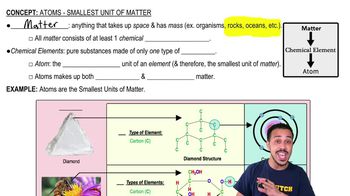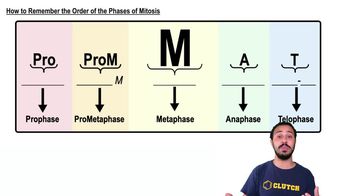Here are the essential concepts you must grasp in order to answer the question correctly.
Metric Units of Measurement
The metric system is a decimal-based system of measurement used globally, which includes units such as meters, centimeters, millimeters, micrometers, and nanometers. Each unit is a power of ten, making it easier to convert between them. Understanding these units is essential for comparing sizes accurately.
Recommended video:
Atoms- Smallest Unit of Matter
Order of Magnitude
Order of magnitude refers to the scale or size of a quantity in powers of ten. In the context of metric units, each step down (e.g., from millimeter to micrometer) represents a factor of ten smaller. This concept helps in quickly assessing the relative sizes of different units.
Recommended video:
How to Remember the Order of the Phases of Mitosis
Nanometer
A nanometer (nm) is one billionth of a meter (10^-9 meters) and is commonly used to measure things at the atomic and molecular scale, such as wavelengths of light and sizes of molecules. It is significantly smaller than a micrometer (10^-6 meters), millimeter (10^-3 meters), and decimeter (10^-1 meters), making it the smallest unit in the provided options.
Recommended video:
 Verified step by step guidance
Verified step by step guidance Verified video answer for a similar problem:
Verified video answer for a similar problem:



 6:13m
6:13m